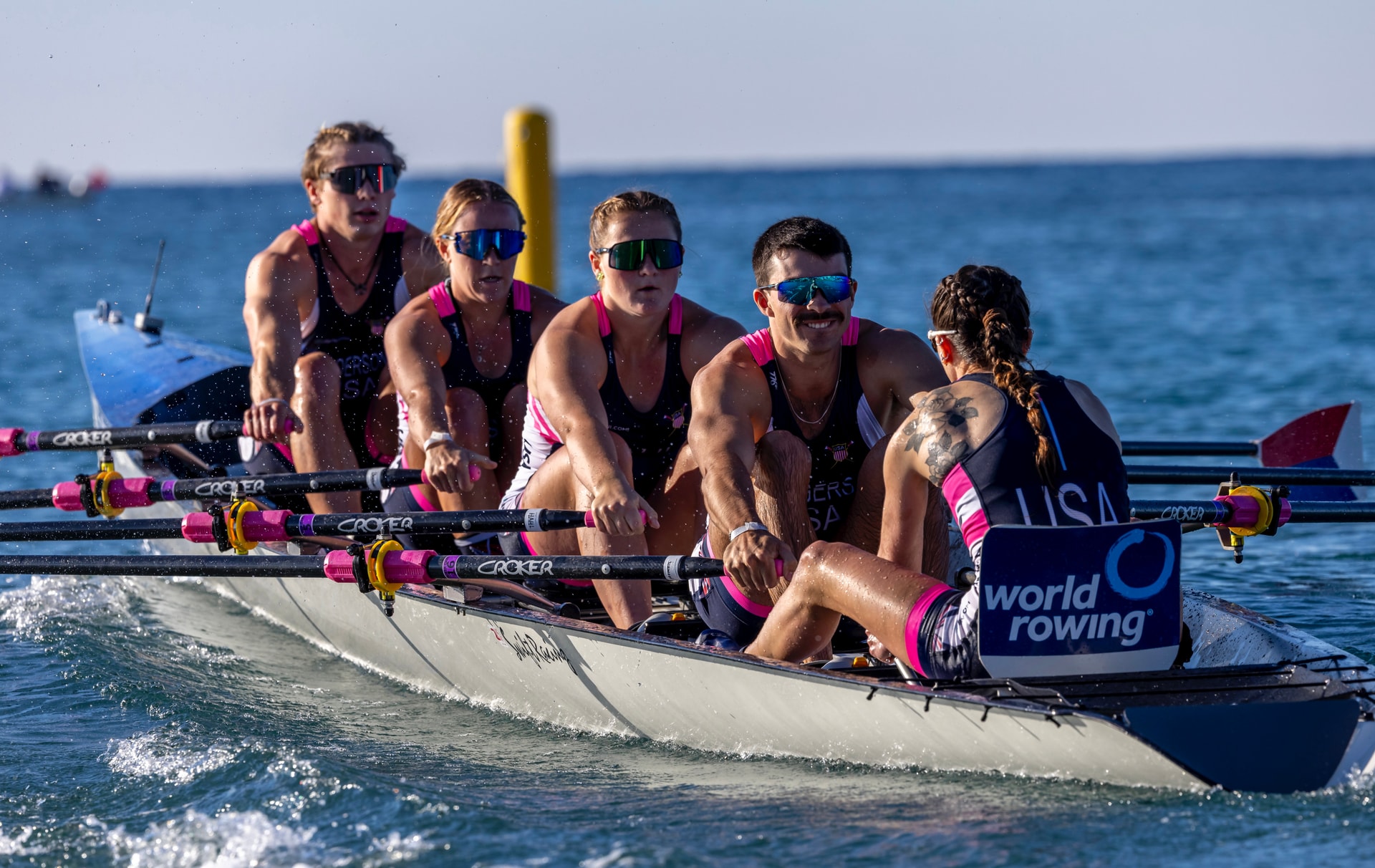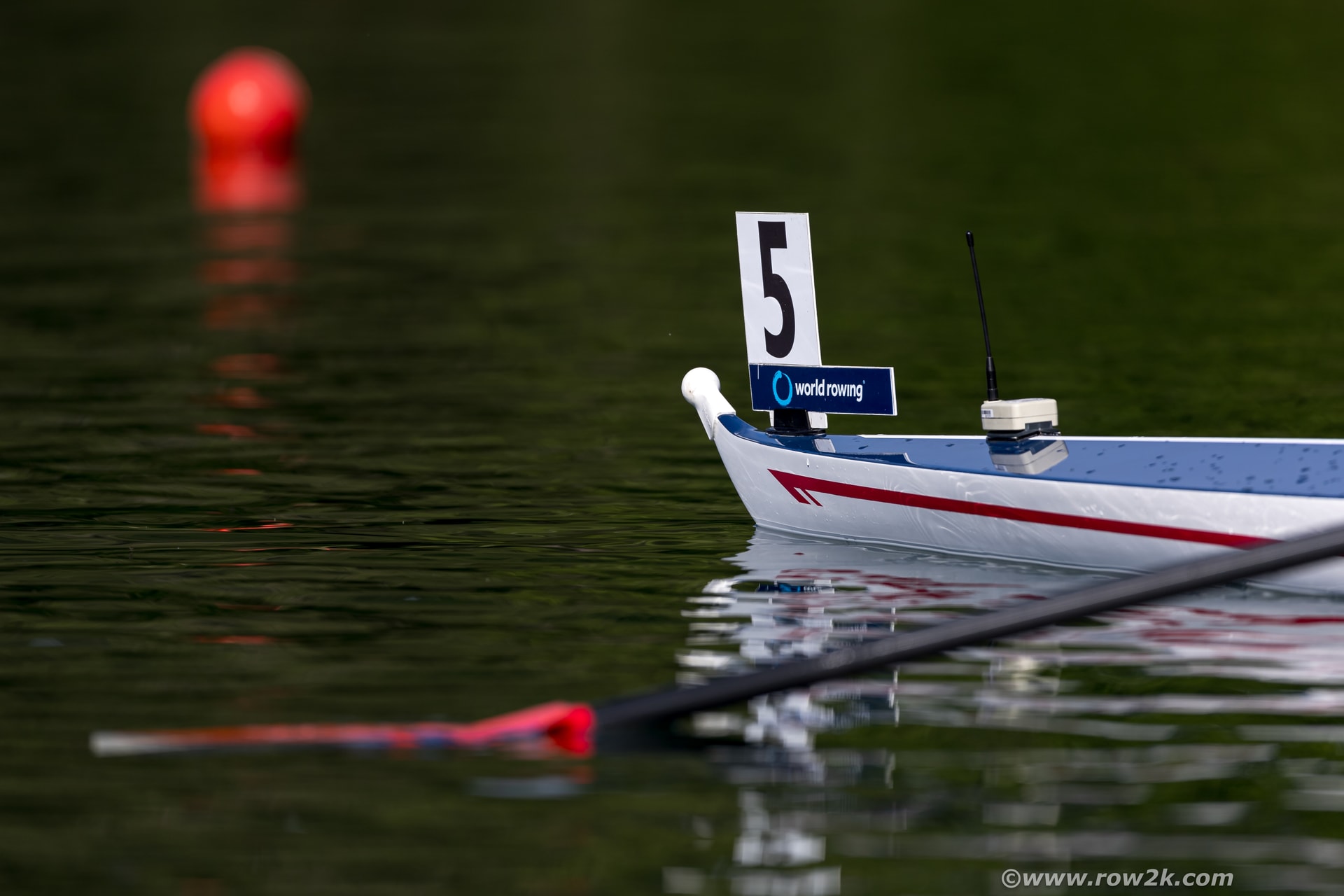Coastal Rowing

Learn about Coastal Rowing
Coastal rowing is the sport’s most adventurous, fast-growing discipline, bringing the challenge of open water and the excitement of beach racing to athletes of all levels. From high-speed, head-to-head Beach Sprints to the endurance and strategy of long-distance coastal racing, this discipline demands strength, adaptability, and a true connection to the elements. Explore the two racing formats, learn the skills required, and discover why coastal rowing is becoming one of the most dynamic ways to experience the sport.
Beach Sprints
Beach sprint is a dynamic coastal rowing discipline featuring a head-to-head, elimination-style race format. It combines a beach run to a boat, a 250-meter slalom course around buoys, and a final sprint back to the beach, culminating in a final sprint to a finish line on the sand.
The sport emphasizes speed, agility, and adaptability, requiring athletes to navigate both the water and the beach effectively.
Beach Sprint Rowing, the sport of the future? Here's a more detailed breakdown:
- Beach Start: The race begins with a short sprint from a designated starting line on the beach to the boat, which is held by handlers in the water.
- Slalom Course: Athletes row a 250-meter course, navigating around three buoys in a slalom fashion. At the final buoy, athletes execute a 180-degree turn, heading back towards the beach. Beach Finish: Upon reaching the beach, one rower exits the boat and sprints to a finish line marked by a buzzer.
- High Intensity: The entire race is designed to be fast-paced and intense, requiring athletes to be both strong rowers and quick runners.
How can I get started?
FREE online Coastal Rowing Course in The Launch.
The USRowing/World Rowing Coastal Coach Certification Course is an online introductory course on the coastal discipline, racing formats, safety, and technique. We encourage all athletes, parents, and coaches to explore this free resource, and for coaches to use it as an informative precursor to our in-person Coastal courses.
Access the course via The Launch (via the member portal)
NEW! USRowing/World Rowing Coastal Rowing Certification Course:
This in-person course concentrates on the beach-sprint discipline and is geared toward individuals with prior rowing-coaching experience who want to expand their competence in coastal racing.
- When: January 31-February 1, 2026 (Saturday 8am-5pm; Sunday 8am-12pm)
- Where: Long Beach, CA
- Price: $425
- To register: USRowing member coaches can register via their Coach Profile via the Member Portal. Anyone else who is interested, please email learningdev@usrowing.org
- Pre-requisite: The free, online Coastal Rowing Course available in USRowing’s Learning Hub, The Launch (via the member portal).
- Key Topics Covered:
- Planning and managing safe coastal-rowing practices.
- Launching and landing in variable coastal conditions.
- Foundational rescue and emergency-response drills.
- Techniques and strategies for both sprint and endurance race formats.
- Practical aspects of event logistics, including how to organize and mark out a beach-sprint course.
- What Coaches Get: Coaches will have a dual USRowing and World Rowing Coastal Coach Certification. This provides a powerful combination of national recognition, international credibility, and practical skill development. This certification also makes coaches eligible to pursue the World Rowing Coastal Tutor designation, unlocking opportunities to train other coaches, expand their professional impact, and generate additional revenue.
What competitions are coming up?
- Istria Rowing Cup — Feb 25-Mar 1, 2026; Lim Bay, Croatia
- International Coastal Rowing Beach Springs LNC Competition — May 1-3, 2026; Limassol, Cypress
- 1924 Pharoes Trophy Oeiras Beach Sprints — July 24-25; Oeiras, Portugal
- And for more events...Go here
How to Beach Sprint

Endurance Coastal Rowing
Endurance Coastal Rowing is a thrilling test of stamina, strategy, and seamanship over long distances on open water. Athletes race side-by-side over a multi-kilometer course, navigating wide arcs, sharp turns, and unpredictable coastal conditions—all while maintaining pace, rhythm, and composure.
This discipline emphasizes endurance, tactical awareness, and adaptability in the face of changing tides, wind, and waves.
Endurance Coastal Rowing: A true test of grit on the open sea. Here’s a breakdown:
- Mass Start: All boats begin together from a floating or beach-based start line, requiring positioning skill and quick acceleration.
- Multi-Kilometer Course: Races typically span 4 to 6 km and feature long straightaways, sharp buoy turns, and occasionally cross-traffic from other competitors.
- Open Water Conditions: Athletes must read waves, adjust their line, and adapt their stroke to ever-changing sea states, often requiring technical finesse and raw endurance.
- Tactical Racing: Overtaking, course strategy, and timing buoy turns become critical elements—this isn’t just about fitness, but mental game and navigation.
- Grind to the Finish: With no sprint back to the beach, endurance events demand a sustained, controlled push to the final buoy and through the finish line, often neck-and-neck after kilometers of racing.
Endurance Coastal Rowing: Not for the faint of heart. Built for the bold.
How to Endurance Coastal Row

Education
The Launch

Safeguarding
Report a Rowing Safety Incident

Discover























